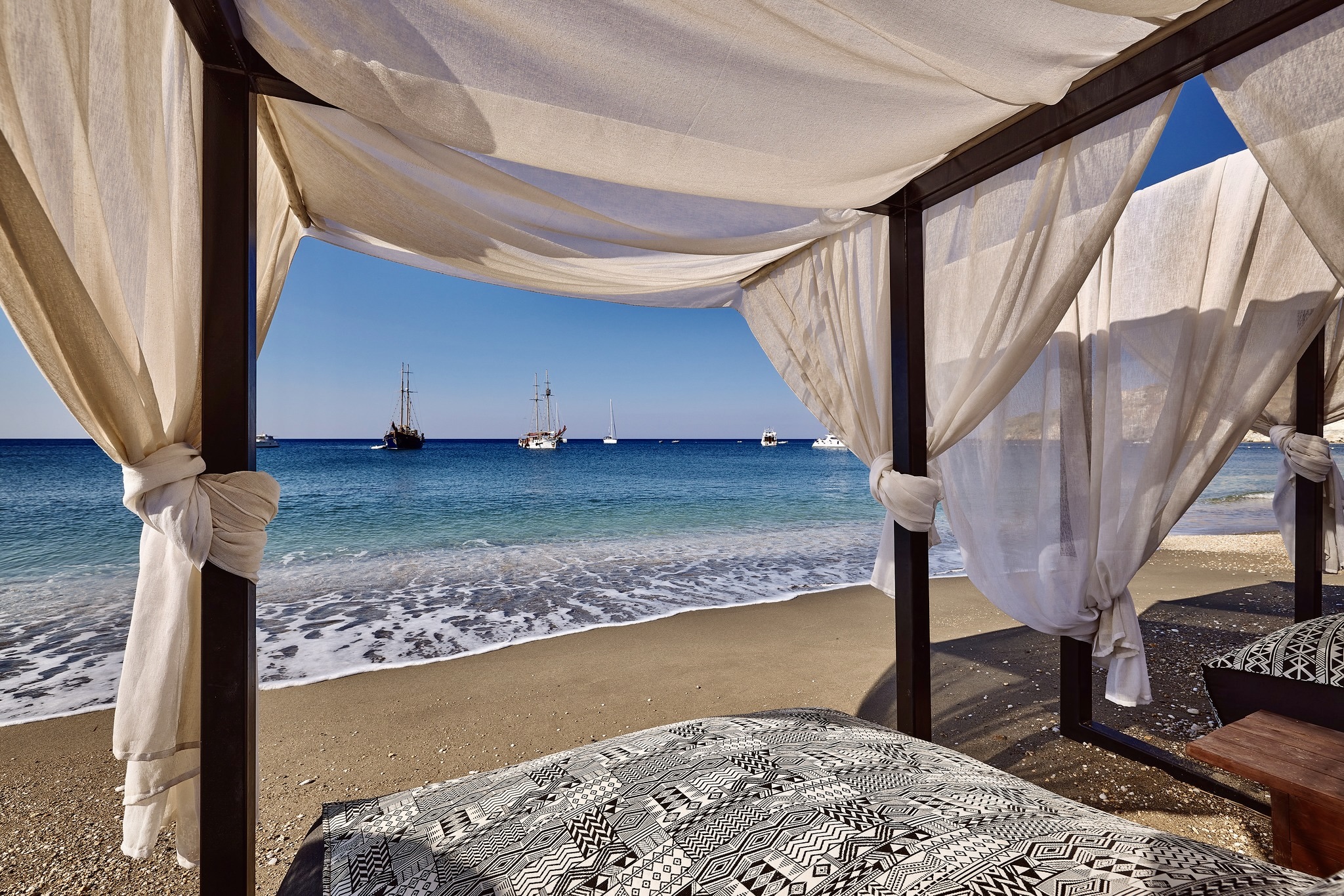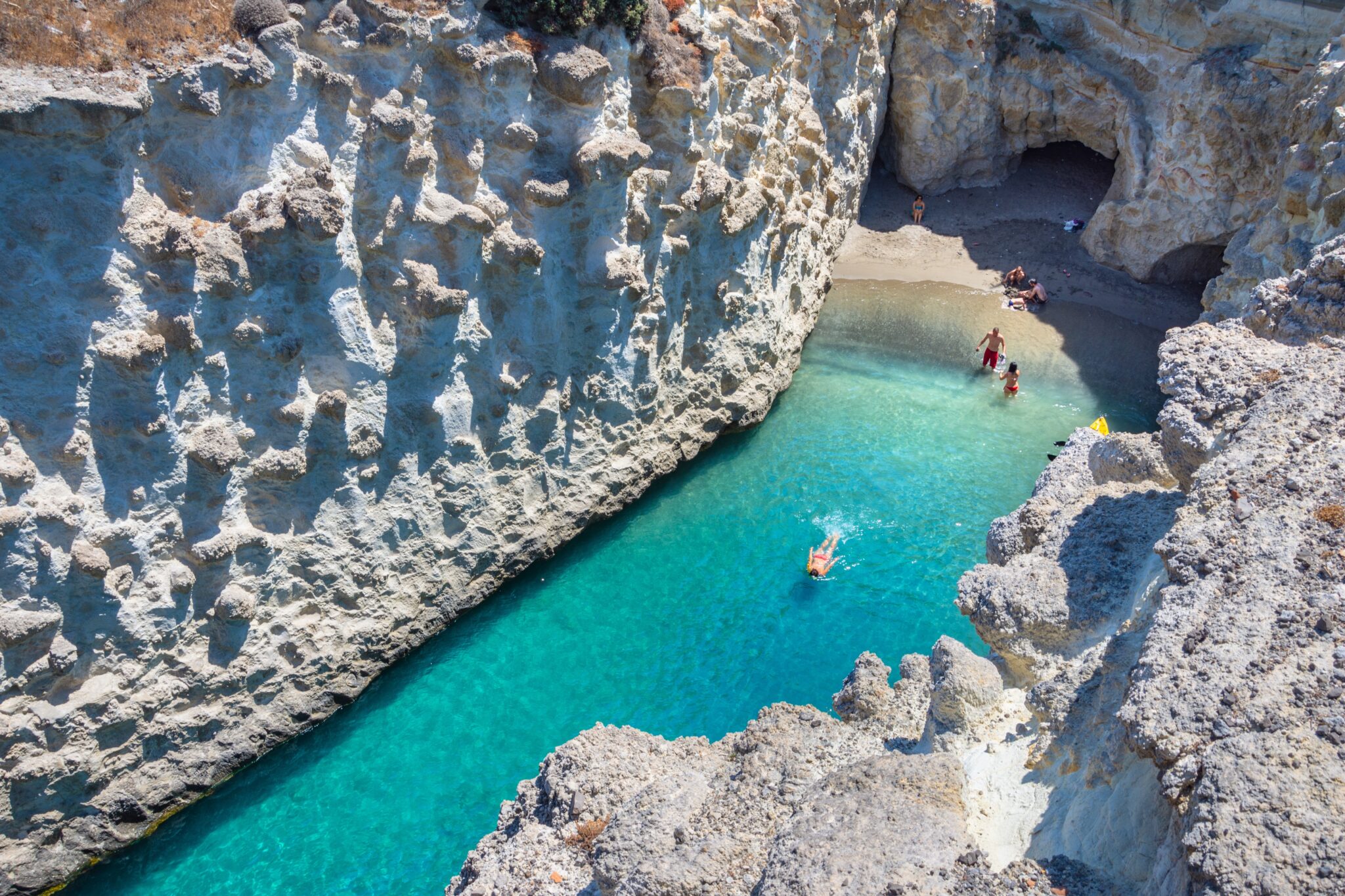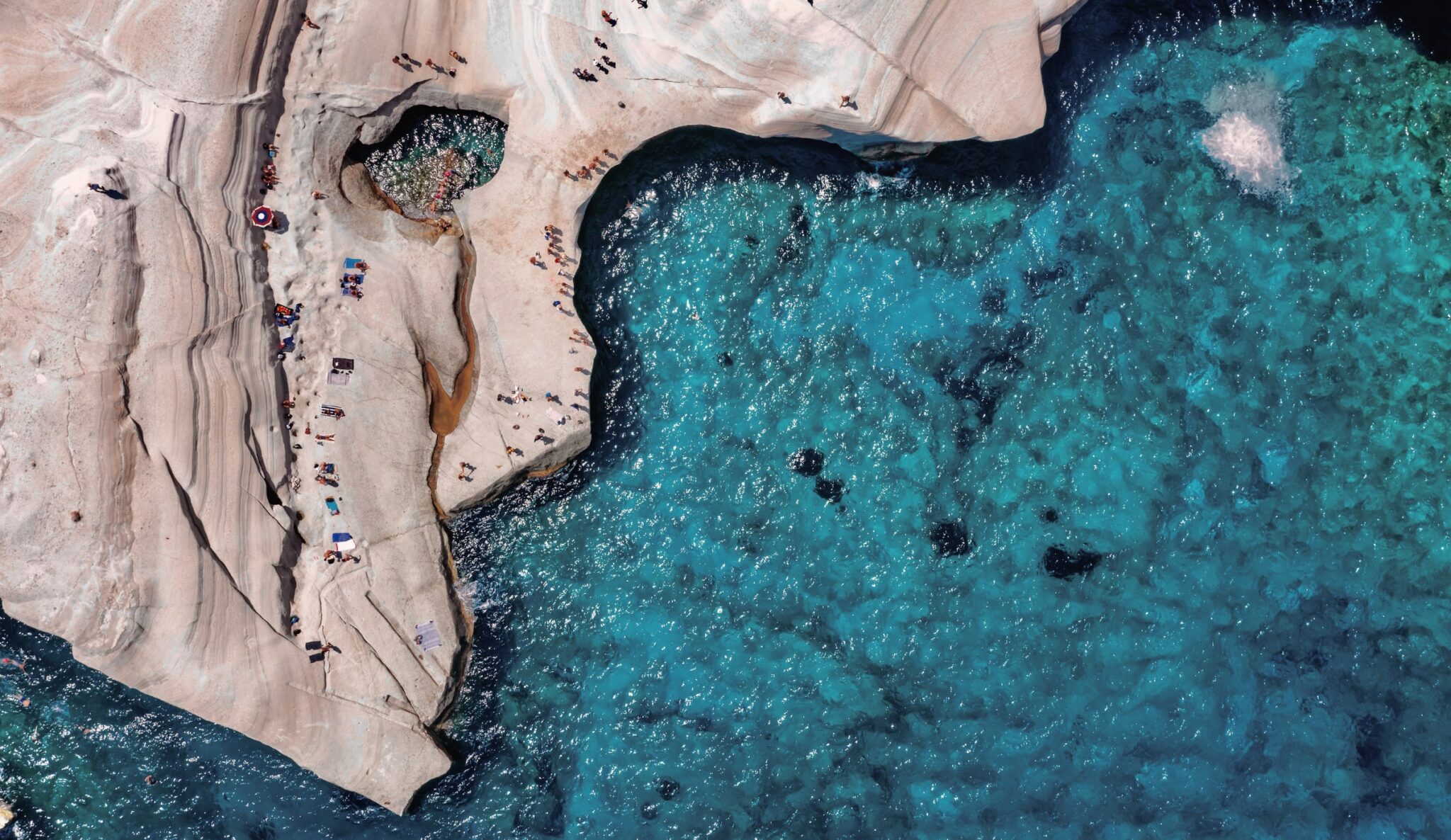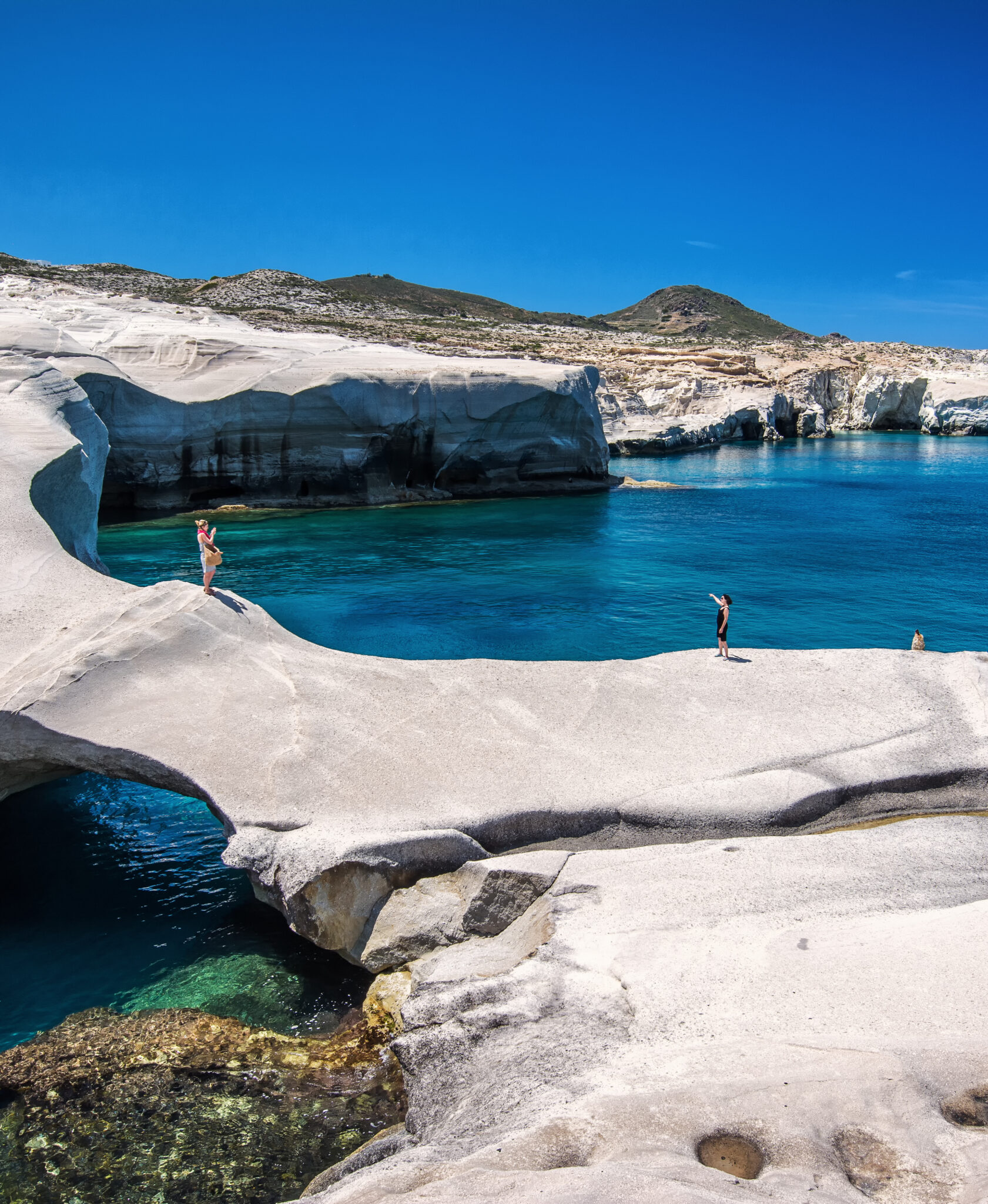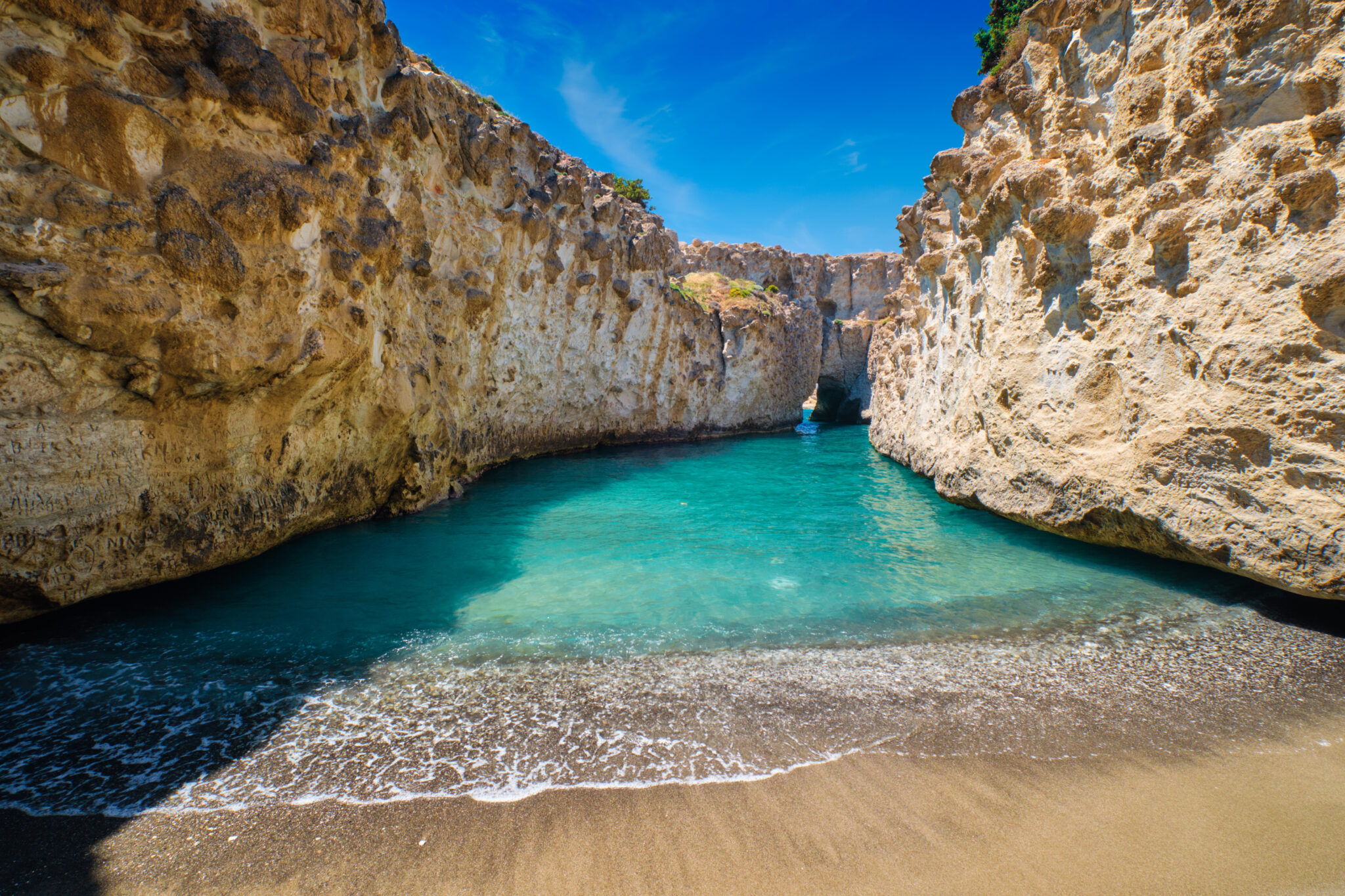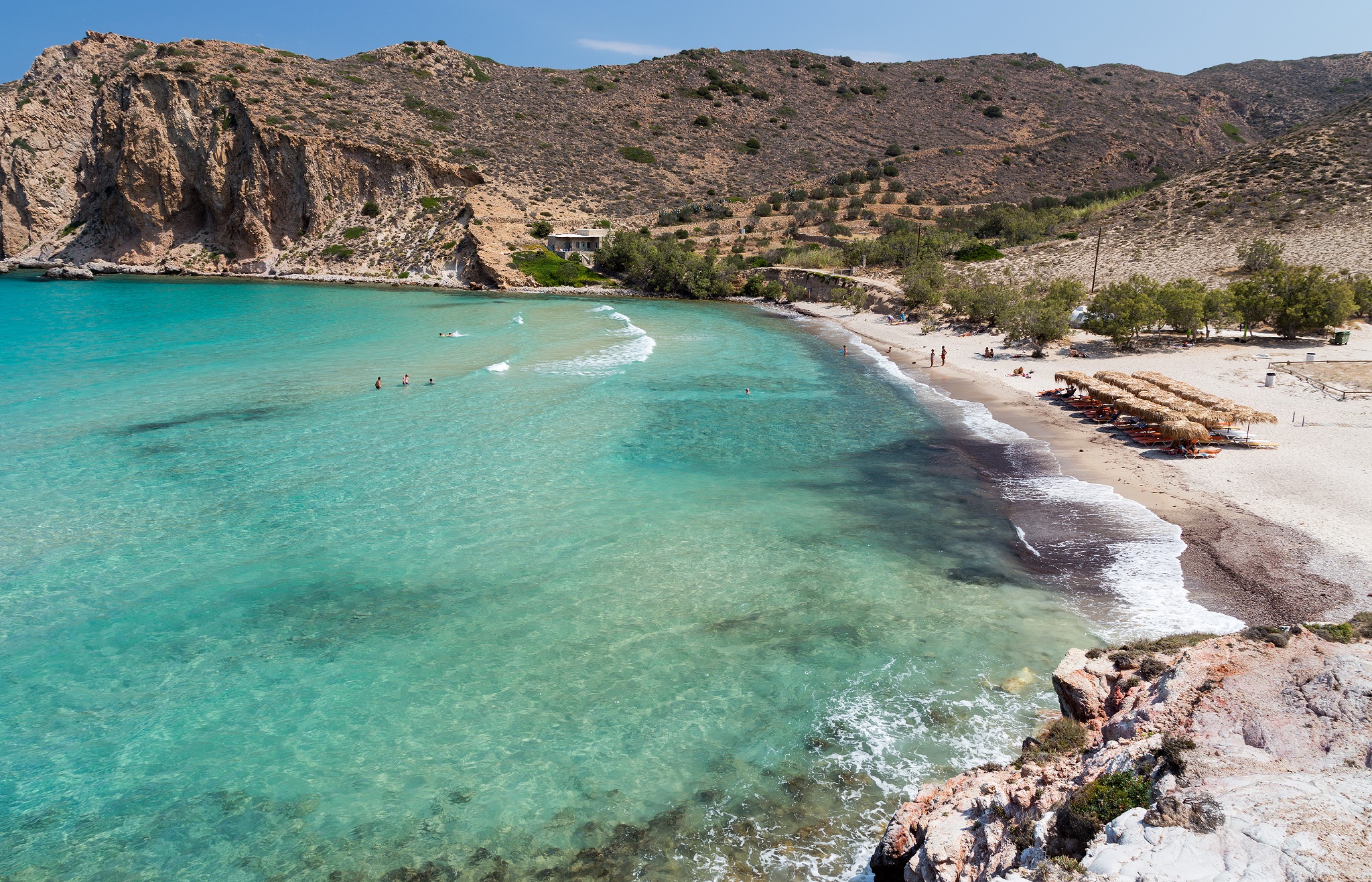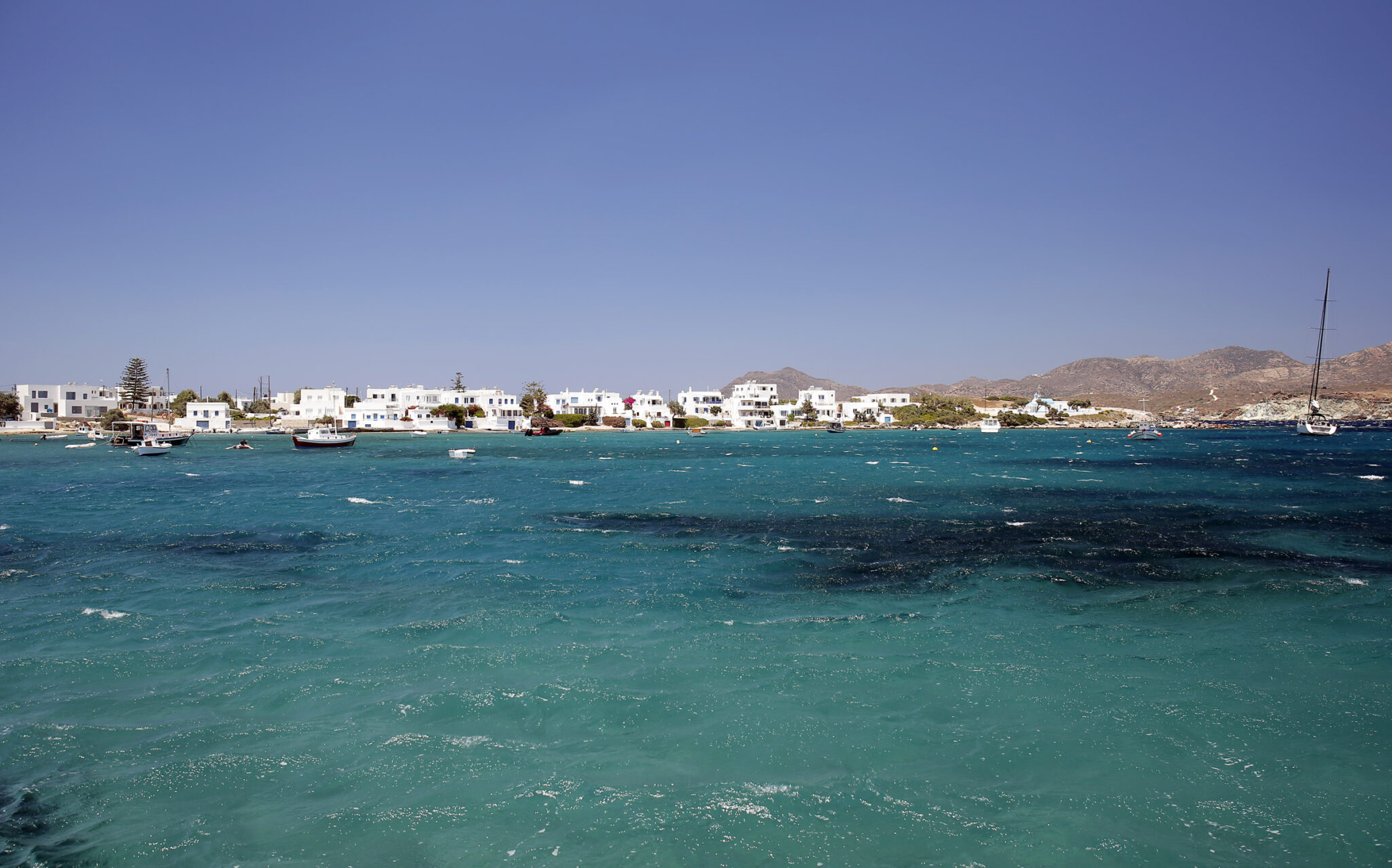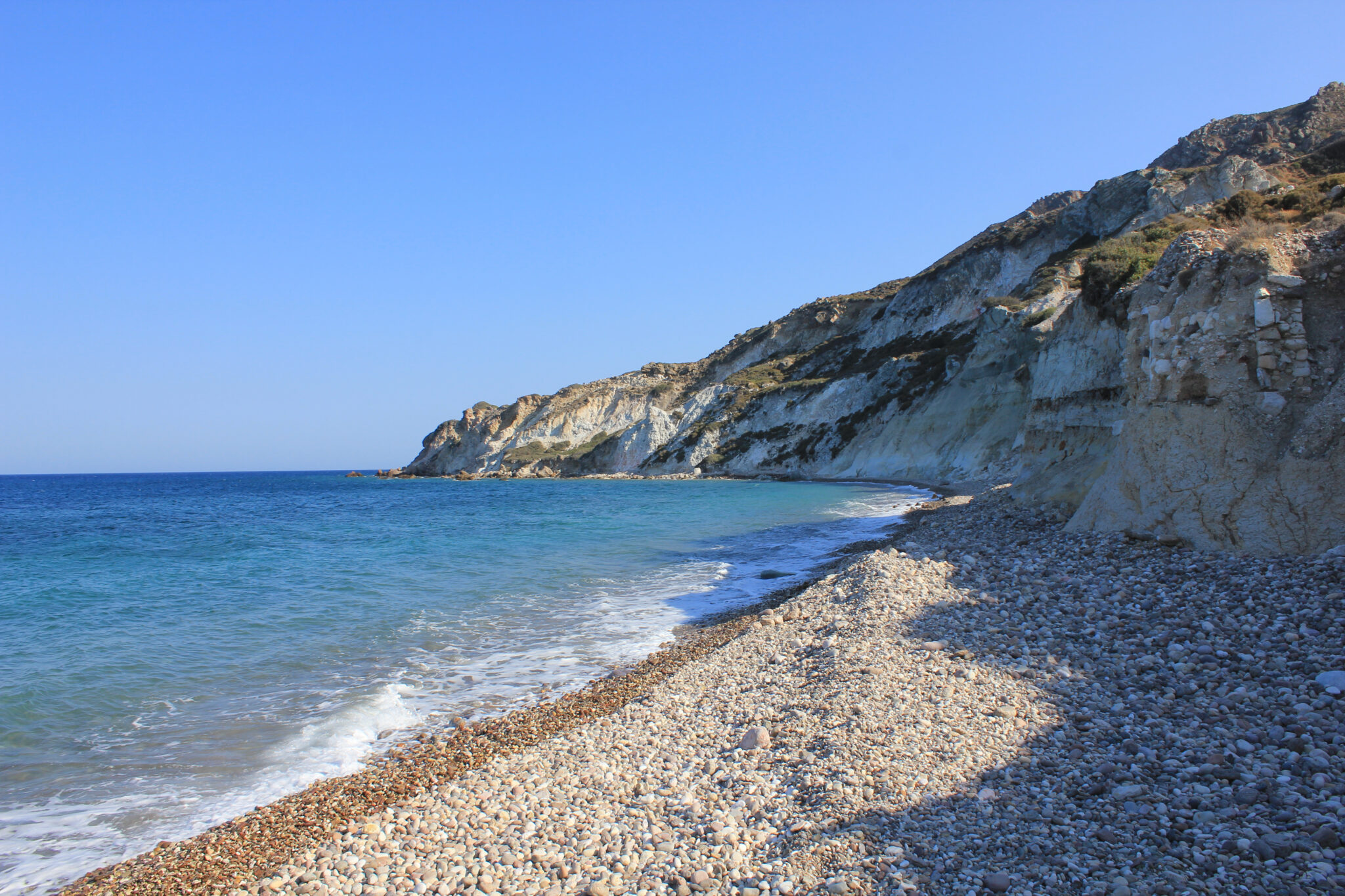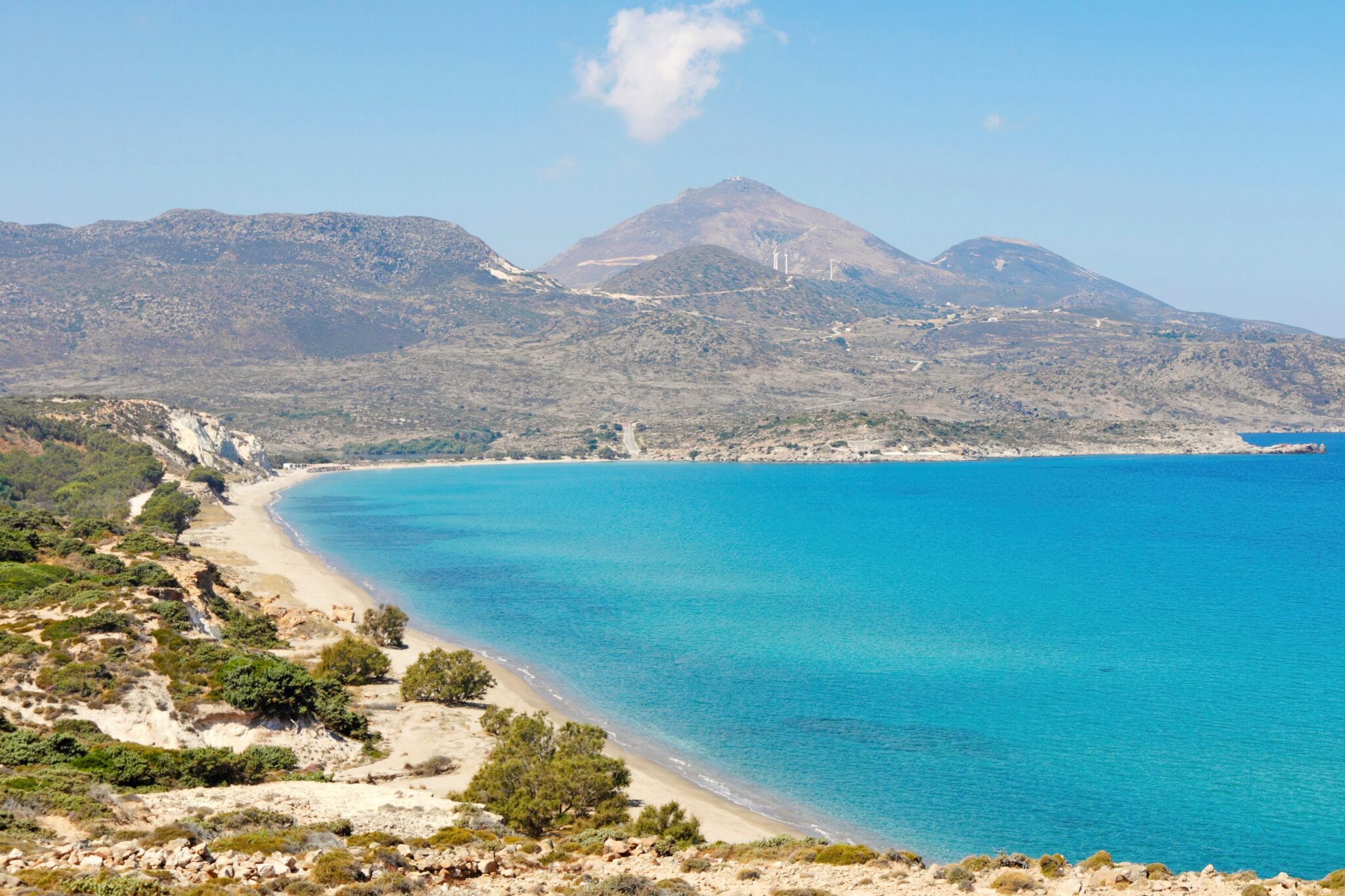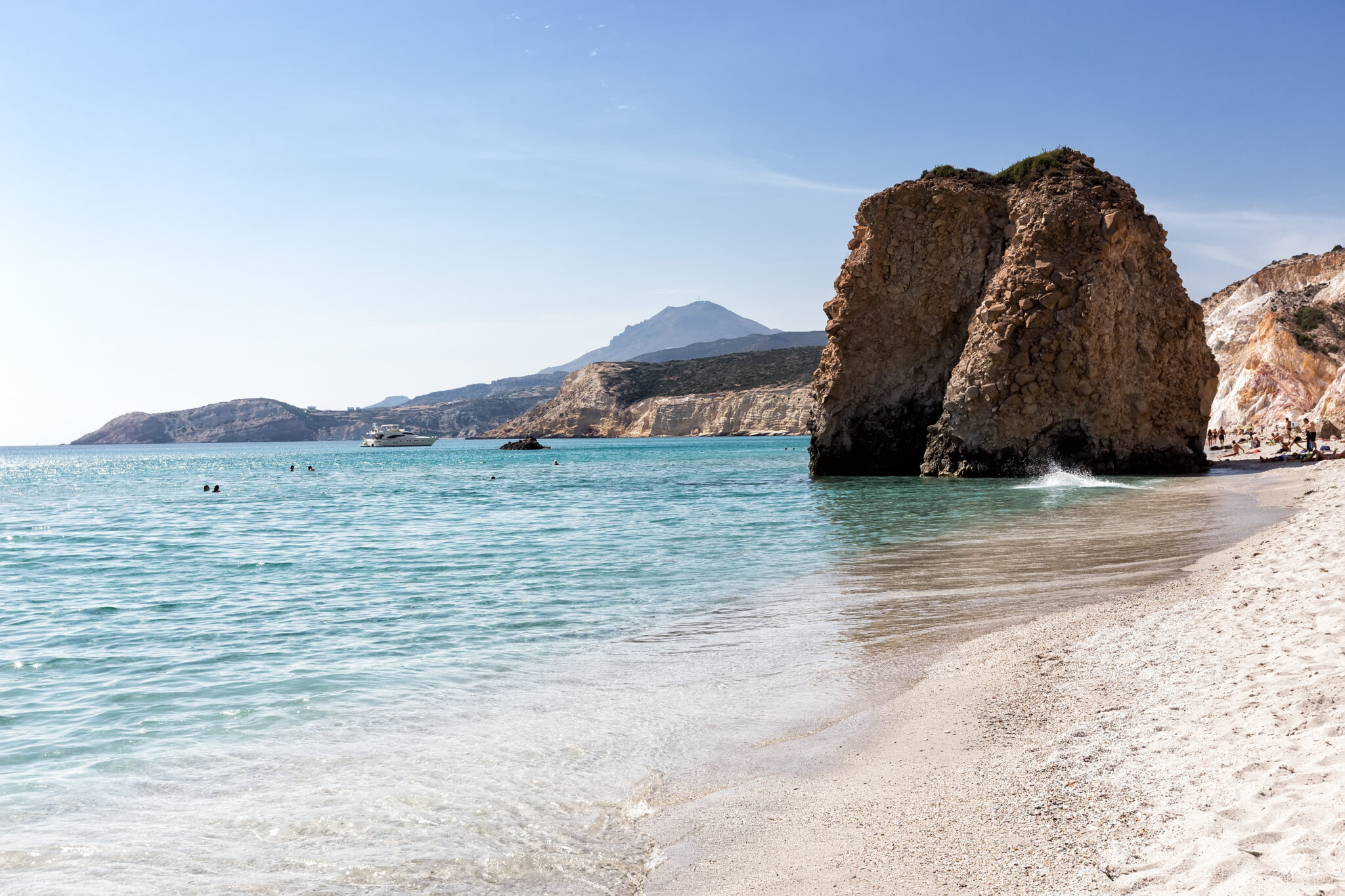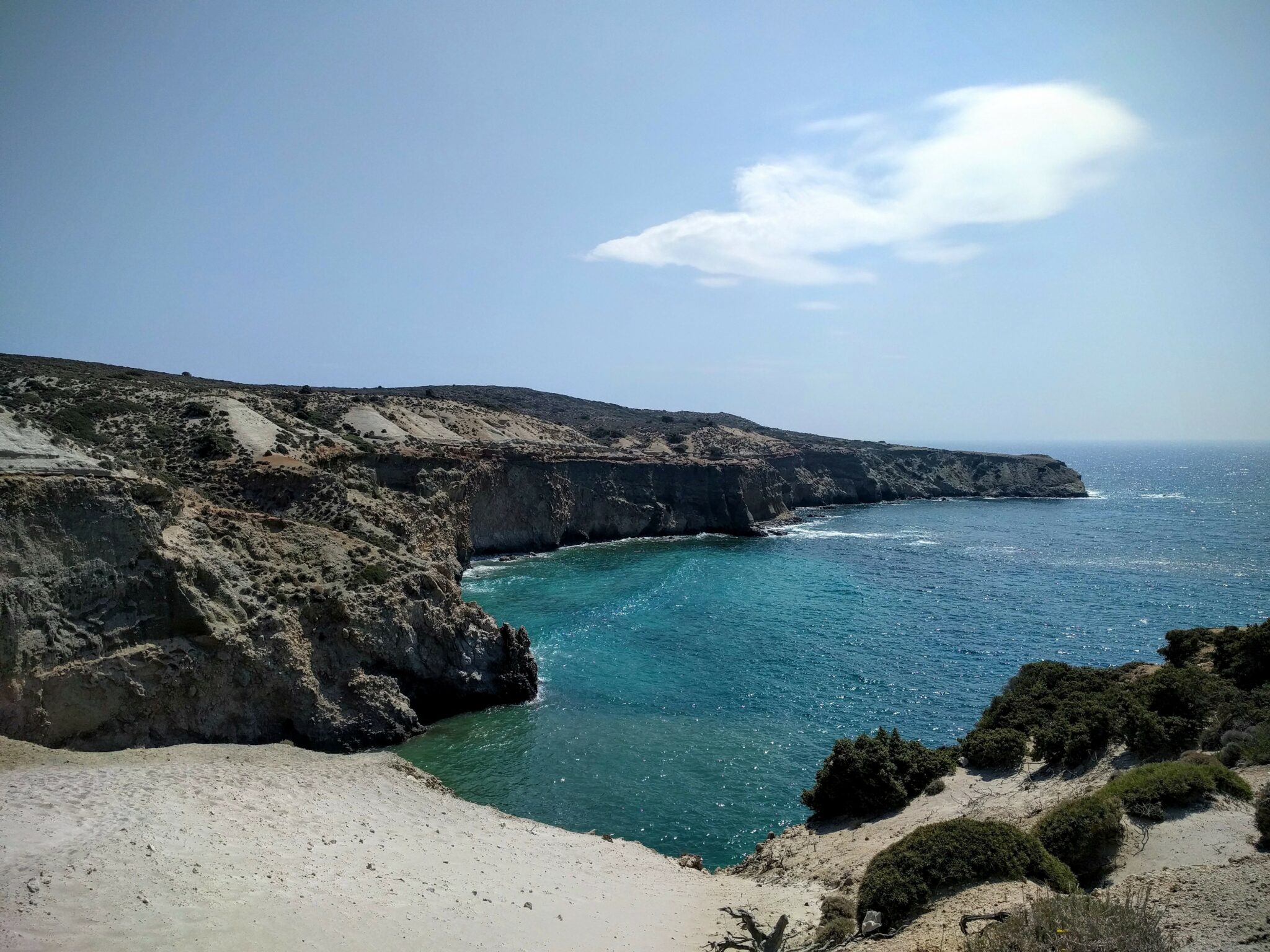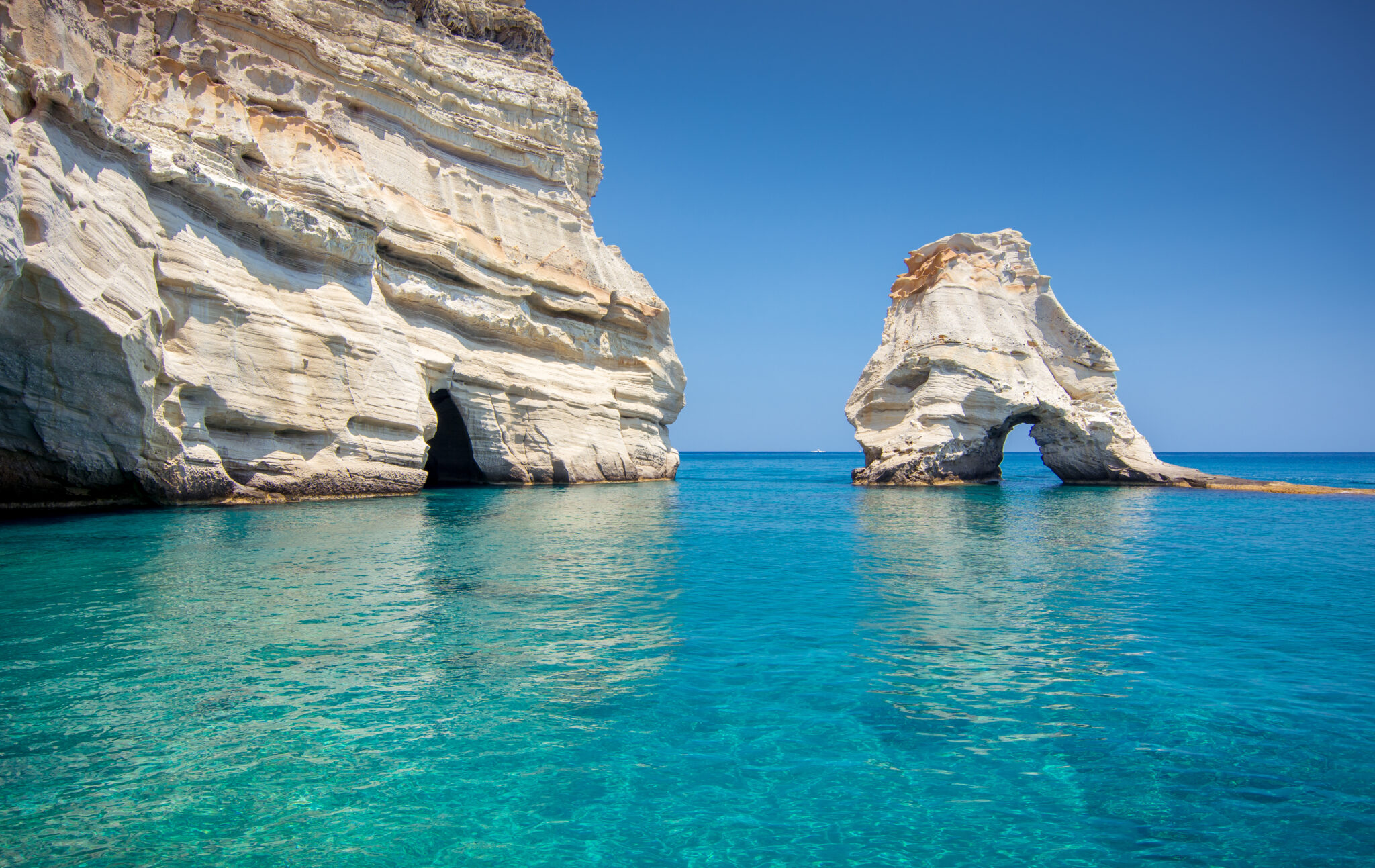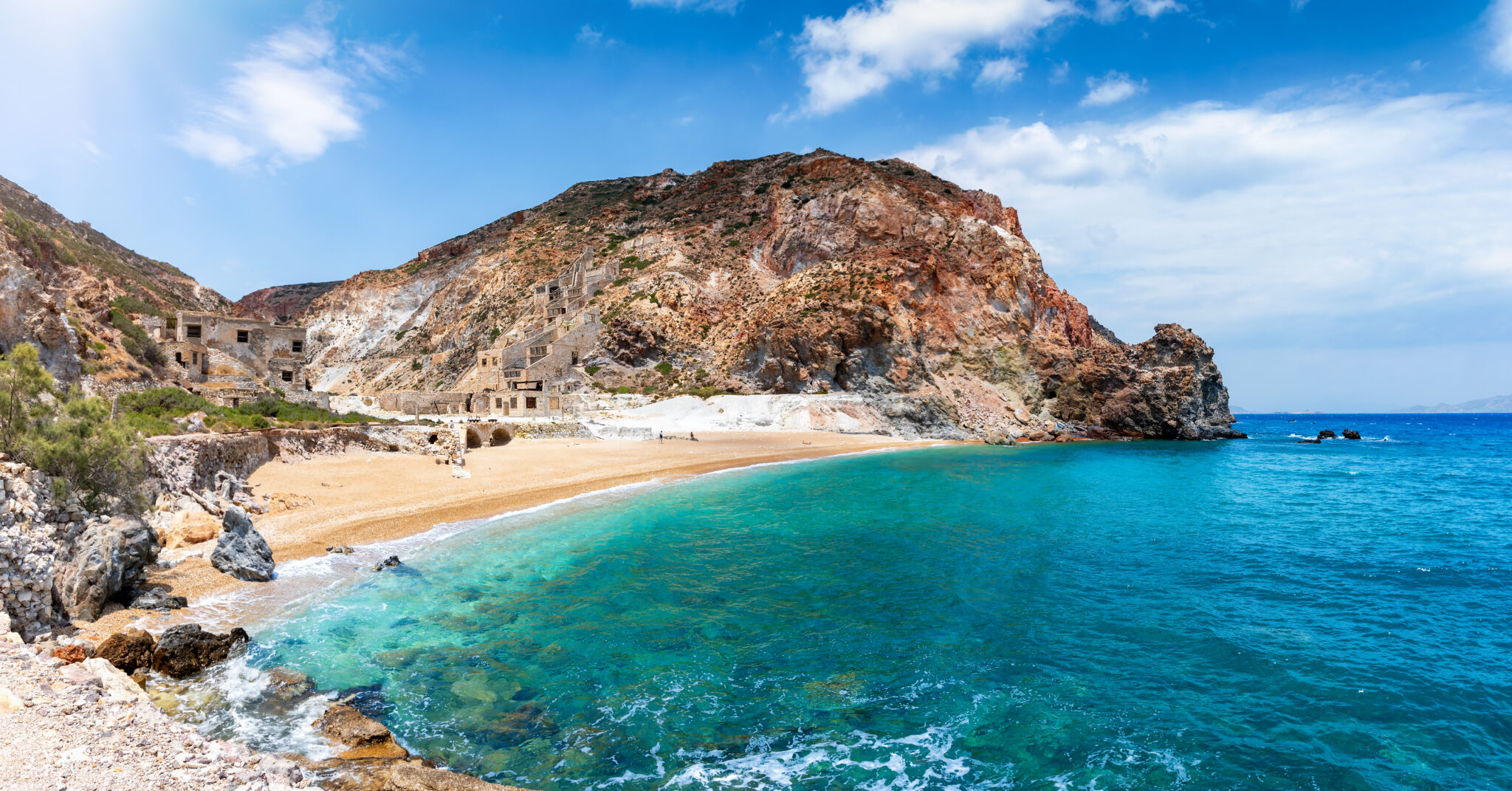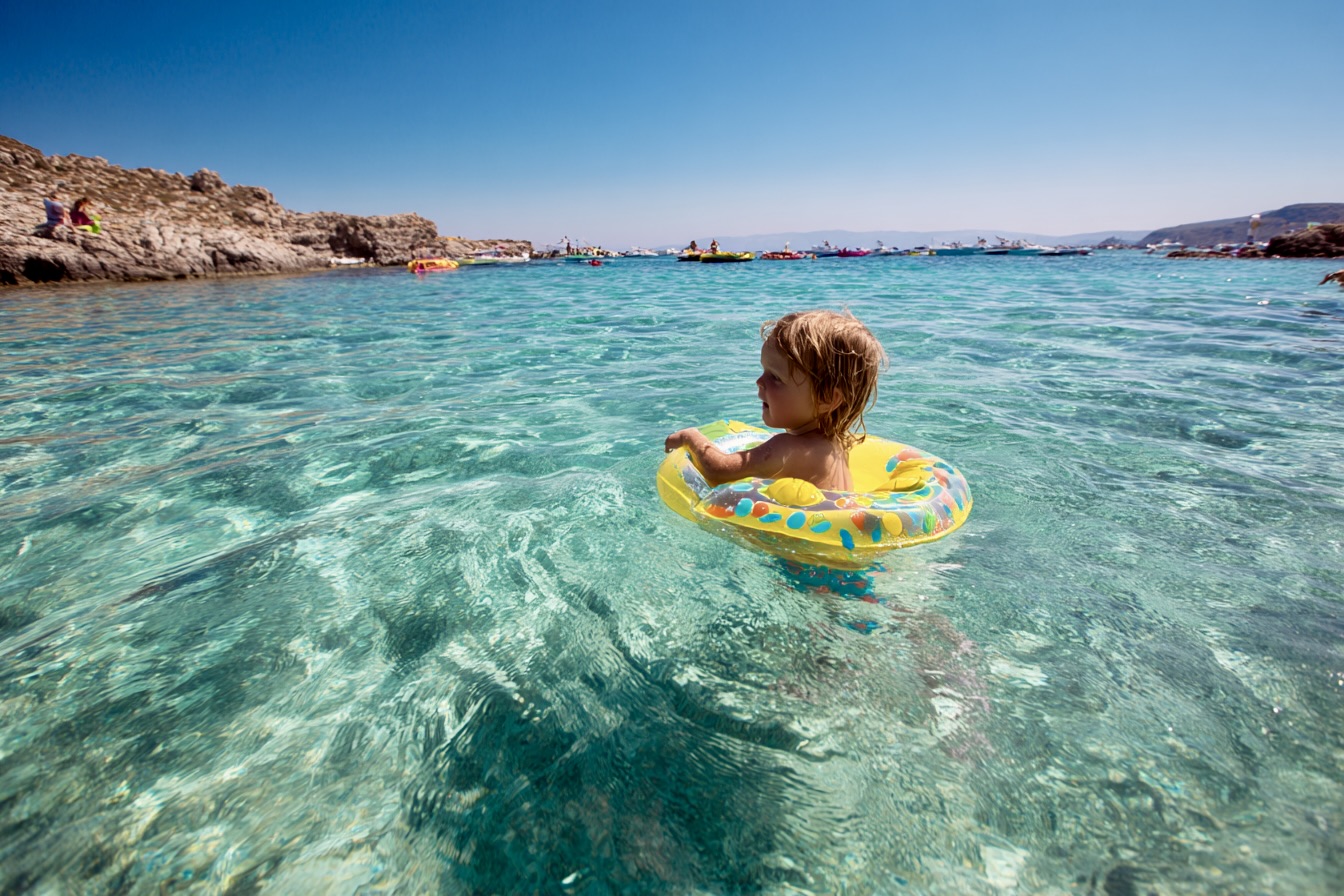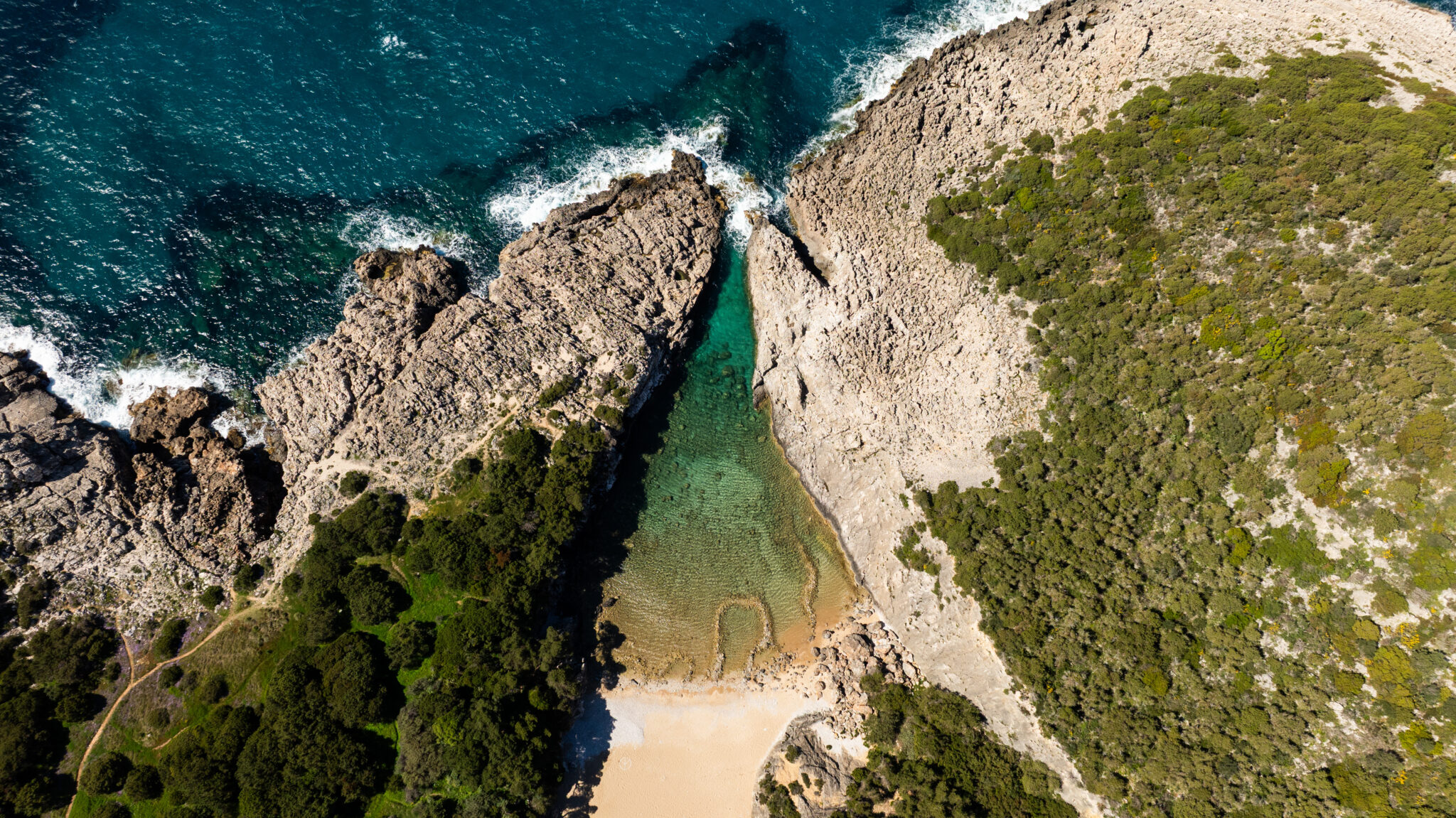Cycladic rising star Milos is celebrated for its diverse beaches, each with its singular appeal. Sarakiniko, famous for its unusually shaped, blazing white volcanic rocks, presents an almost otherworldly, lunar landscape. For those seeking seclusion, Tsigrado is an adventure, accessible by a ladder and perfect for snorkeling with its clear waters and dramatic cliffs, while Kleftiko is a snorkelling lover’s paraadise, with a series of caves to explore. Firiplaka is known for its extensive sandy shore and vibrant turquoise waters, while Paleochori showcases striking multi-colored cliffs and hints of geothermal activity, adding a touch of natural wonder. From the tranquil Firopotamos to the busy Sarakiniko, Milos’ beaches have something to please all preferences, promising unforgettable seaside experiences
Northern Coast
Papafrangas
Beyond Pollonia, a deep schism in the cliff forms a natural mini-fjord. Narrow steps cut into the soft stone, leading to a tiny beach with caves behind and an arch out to sea. Small, spectacular and very popular, there are no facilities at all.
Firopotamos
The nearest beach to Mandraki, Firopotamos is small and sandy with some umbrellas and a popular canteen. There is some parking behind and the water in the sheltered bay is particularly clear.
Plathiena
Two kilometers from Plaka, pretty Plathiena is a mix of sand and pebbles and has shallow waters that warm to bathtub temperatures in summer. Sunsets here are magical, looking out to the islet of Antimilos, best taken with a sundowner from the beach bar. Parking can be tricky in high season and the handful of umbrellas get rented quickly.
Sarakiniko
One of the undisputed highlights on Milos. Eerie and other-worldly, the beach itself is small but it is possible to lie on the surrounding smooth rock. Arrive at sunrise and you might be the only visitor, or come for an epic sunset experience. There is a car park which serves as the bus stop, and there is a rudimentary canteen for refreshments.
Near Pollonia
Mytakas
A long sandy beach on the northern coast with a handful of syrmata, the local boathouses. There is a small canteen but limited shade and it gets buffeted by the north wind when the meltemi is blowing.
Pollonia
At the northeast corner of Milos, overlooking the strait to Kimolos, is a small bay around which the village clusters. Long and sandy, the beach is backed by trees for shade and there are tavernas and restaurants in the village.
Near Adamas
Fatourenia
Next to Rivari, it sits on a shallow lagoon, and has a mix of sand and pebbles. Completely unorganised, there are views across the Bay of Milos to the villages opposite.
Lagada and Papakinou
These two beaches top and tail the port town. Papakinou is sandy with shade from Tamarisk trees and it follows the road as it stretches out of town. Lagada is on the other side of the ferry terminal and is perfectly fine for a cooling dip near to the town hotels.
Achivadolimni
The longest sandy beach on the island, it is easily accessed from the road that runs behind it. The shallow waters are appreciated by families and there is a beach bar and umbrellas to rent. Kitesurfers and windsurfers enjoy the predictable winds that blow across the bay.
Southern Coast
Agia Kyriaki
An attractive sandy beach with pebbly sand, it is backed by Tamarisk trees giving plenty of shade. There are umbrellas and a taverna, while the parking is reached at the end of a dirt road. The waters are still and clear and it is sheltered when the north wind is blowing elsewhere.
Kleftiko
Renowned for its dramatic volcanic rock formations creating three small bays on the island’s southwest tip, this beach is a must for swimmers. These bays, shaped over millennia by wind and waves, are known as the “Meteora of the Sea” due to their unique landscape. Historically, Kleftiko served as a pirate hideout, with its numerous caves providing shelter from storms. Today, these caves can be explored by boat or swimming, offering a glimpse into the area’s storied past. The beach itself is less about sandy stretches and more about its striking rocks and crystal-clear turquoise waters, perfect for swimming, diving, and snorkeling. The area is accessible only by boat, with daily cruises from Adamas port, or by renting a private boat for a personalized experience. Hiking to Kleftiko is not recommended due to safety concerns.
Gerontas
A strip of nice sand with shallow clear waters looking out onto a distinctive rock arch. There is a car park at the top with a steep path to the beach, and another to neighbouring Katergo, a small cove surrounded by white cliffs. There are no facilities at either beach so come prepared.
Kipos
It stays quiet as there is no sand but rather large pebbles. Unorganised, there is a pier to swim from and a taverna on the hill above the beach. The water is clear and on the horizon barely visible lies Crete.
Firiplaka
Long and sandy with a very gently sloping seafloor and steep cliffs hued in multi- coloured layers. There is a beach bar with umbrellas but the beach is narrow and can get very busy in high season. Access is through one of the mining areas and there is a clifftop car park.
Paliochori
One of the most popular beaches and with good reason. Developed with parasols, beach bars and tavernas, the cliffs behind the beach are impressively coloured. The beach is known for its hot springs and geothermal activity under the sand; Scirocco Restaurant even cooks some dishes in clay pots buried in the hot sand. Bring beach shoes as the sand and pebbles can get very hot.
Tsigrado
Access is by a wooden ladder and rope attached to the cliffs, but the reward for your efforts is a small fine white sand beach dramatically surrounded by cliffs. One of the most beautiful beaches on the island it can get busy as day boats visit it. Of course, there are no facilities.
Provatas
A nice sandy beach but unspectacular in Milos geological terms. The water shelves gently and families enjoy wading in the shallows. There are beach taverns and sunbeds and it joins the neighbouring bay of Agios Sostis, which is generally quieter.
Eastern Coast
Kolibisionas
A fine pebbly cove surrounded by cliffs, the water is perfectly clear and there are no facilities.
Tria Pigadia
A small and remote beach, it is a mixture of pebbles and coarse sand. Completely unorganised, it is at the end of a long dirt road and it is nearly always very quiet.
Thiorichia
With fine white and orange pebbles and clear water, here and next beach Thiafes are dominated by the old sulphur mines that lie derelict here. The yellow mineral is dusted everywhere and the old buildings lend an eerie air. Access is by dirt road and there are no facilities.
Western Coast
Triades, Ammoudaraki & Agios Ioannis
Triades Beach, situated on the west coast of Milos, is a secluded and serene spot comprising three distinct beaches: Triades, Ammoudaraki, and Agios Ioannis. These shores are separated by rock formations and cliffs, lending to the area’s name, which means “trinity.”
The beaches feature fine golden sand and crystal-clear turquoise waters, which deepen near the shore. However, due to its location, strong winds can create high waves in the evenings. There are no facilities available, so visitors should bring necessary supplies. Access is either by boat or a difficult dirt road that only reaches one of the bays.



